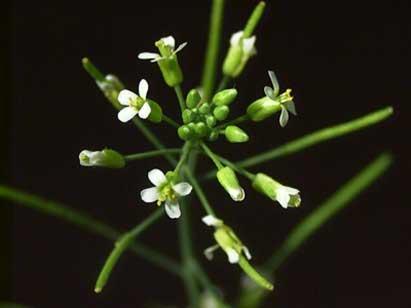When do plants bloom?
2001/12/11 Elhuyar Zientzia

In spring, of course. But what is the concrete moment? That is, what factors initiate the process of obtaining? Tropical plants grow and bloom rapidly, with the sun at its peak, but larger latitude plants await spring. Both investigations, for their part, have explained these adaptations in very small genetic variations.
Plants are obtained according to the duration of the day and the intensity of light. The northern flowers require long sunbathing and those of the tropics much shorter. California researchers have analyzed 141 samples of the Arabidopsis taliana plant and, to flower, have seen that tropical varieties have 100 times less red light than others. And why? Because tropical varieties have much less receptors than A-phytochrom, which detects red light. And the key to everything is a genetic mutation. In tropical plants, the gene encoding phytochromo A is different: a nucleotide (a letter) is different.
At the same time, Dutch researchers have studied the genome of the Arabidopsis taliana, specifically a region related to the flowering process. In this region, the 2-cryptochrome receptor gene that detects blue light has been detected and in tropical varieties this gene is mutated. Again, the difference is a single nucleotide, so the daily 2-cryptochrome cycle is different in tropical varieties.
Two studies have analyzed for the first time the response of natural varieties to light and have made interesting discoveries. However, these mutations do not occur in all species. Researchers suspect that plants have many mechanisms to detect spring.

Gai honi buruzko eduki gehiago
Elhuyarrek garatutako teknologia




